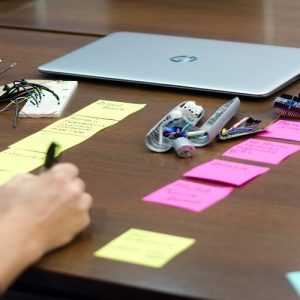There are several prototyping services in rapid prototyping. It all depends on the design of the product. For those who don’t know what rapid prototyping is, this article is here to explain everything in detail. Rapid prototyping is a process whereby physical parts, assemblies, or models are fabricated using 3D Computer Aided Design (CAD). It is then completed by additive printing which is otherwise known as 3D printing. Industries use several prototyping services to manufacture prototypes, depending on the design they want.
There are two kinds of prototypes- the low-fidelity prototype and the high-fidelity prototype. For a design to be high-fidelity, the design has to be similar to the proposed finished product. The opposite case defines low-fidelity prototypes.
Without further ado, let’s look at the types of prototyping services in rapid prototyping?
Types of prototyping services in rapid prototyping
1. Selective Laser Sintering
This method is used for both plastic and metal prototyping. Selective Laser Sintering creates a protective layer one at a time using a powder bed. It uses a laser to sinter and heat the powdered bed. However, the strength of the parts may not be top-notch, so it may need secondary procedures to finish the work.
2. Vat Photopolymerization
This is otherwise known as Stereolithography (SLA). This procedure is one of the fastest and most affordable 3D printing methods there are. The photosensitive liquid is solidified one layer at a time, through a computer-monitored UV light.
3. Powder Bed Fusion
This is otherwise known as Selective Laser Melting. This procedure is often used to create complex and strong parts, and used in aerospace, defense, medical, and automotive industries. A fine metal powder is melted in the Powder bed fusion to create production or prototype parts through an electron beam or extreme powered laser.
What are the materials used for powder bed fusion or Selective Laser Melting?
They include aluminum, stainless steel, cobalt chrome alloys, titanium, etc.
4. Digital Light Processing
This process is very similar to vat polymerization (or stereolithography). It also involves resin polymerization that is cured through a typical light source than the one used in SLA. Although it is cheaper and faster than SLA, it still needs some support structures and curing after building.
There is a similar version known as the Continuous Liquid Interface Production. This process involves the part repeatedly removed from the vat without the layers. During this process, it intersects with a light barrier that changes its configuration and produces beautiful cross-sectional plastic designs.
5. Sheet lamination
Most people know it as the Laminated Object Manufacturing. It is a very inexpensive process and it’s not as sophisticated or complex as Selective Laser Melting or Stereolithography. However, it doesn’t need controlled conditions for the process to take place.
It builds up a group of thin laminates that have been cut precisely with laser beams to produce CAD patterns. Each layer is produced and bonded to the previous one until the desired part is achieved. A lot of prototyping companies use sheet lamination because it saves them a lot of money.
